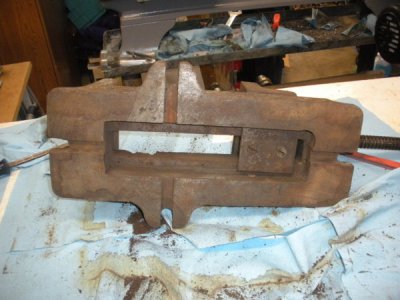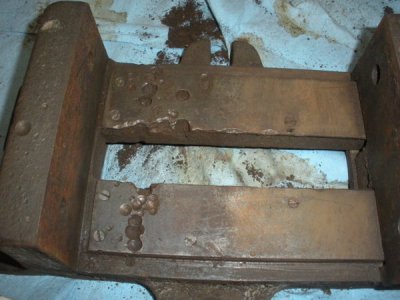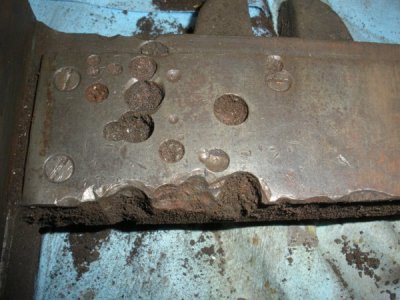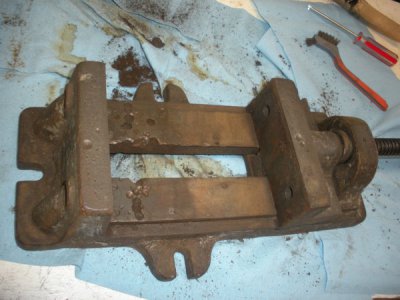- Joined
- Feb 2, 2013
- Messages
- 3,622
Hey Mike,
I've done zero brazing...But have torch setup. But that's not stopped me before. I could take this opportunity to learn it I suppose.
Don't have a GTAW setup... :/ It's on the want list though.
Stick can be a PITA but I've got two tombstones in the garage. One of which I'm willing to trade for something lathe/mill related. lol
I think you and Dave saw me get this thing from Guy. It's a mess and I know better. But I can't help myself.
if you have the torches already and want to learn a new skill,
all you need to do is get some Brazing rod and get a sacrificial piece of steel or cast iron.
you can drill some 1/2" x 1/8 to 1/4" deep holes in the material and fill up the holes, much like plug welding
you'll quickly learn the flow temperatures for the thickness of the parent metal
in brazing you are not melting the parent metal, rather just getting the metal and surrounding zone hot enough to melt the filler rod
not to be confused with braze welding, where the parent metal is brought up to it's melting point and the added filler rod creates an alloy of the parent metal and the filler.
the brazing technique is a heat, dab the filler, and repeat cycle. over and over again.
there is hundreds of hours of instructional videos on youtube that can show you how to braze.
i'd be happy to try and explain things you may have questions about.





